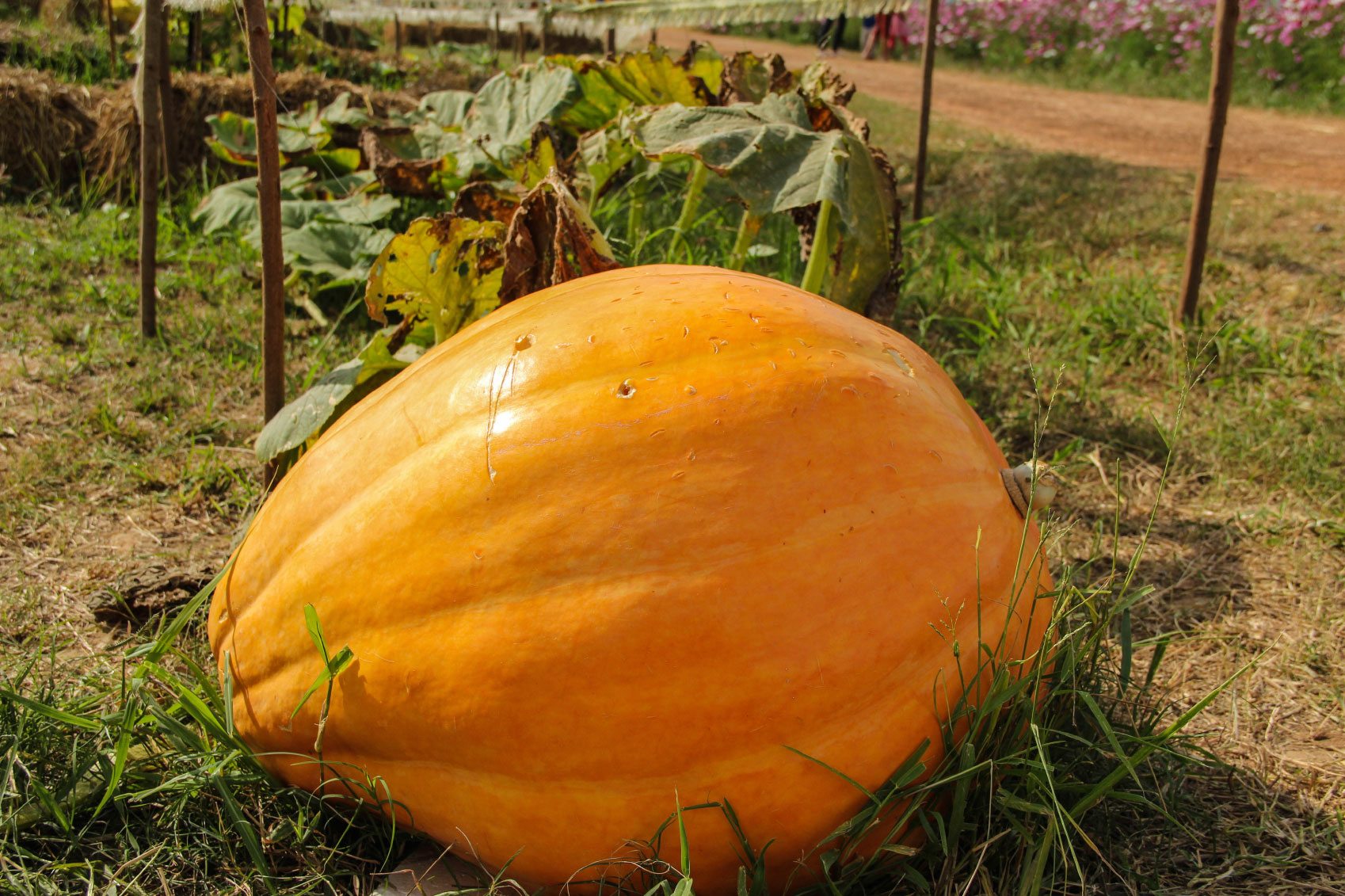Milk Fed Pumpkins: Learn How To Grow A Giant Pumpkin With Milk

When I was a kid, I looked forward to going to the state fair at the end of the summer. I loved the food, the rides, all the animals, but the thing I most clamored about seeing was the blue ribbon winning giant pumpkin. They were amazing (and still are). The winning grower of these leviathans often stated that to attain such great size, they fed the pumpkin milk. Is this true? Does using milk to grow pumpkins work? If so, how do you grow giant milk fed pumpkins?
Growing Pumpkins with Milk
If you do a search regarding feeding pumpkins with milk, you will find quite a bit of information with about a 50/50 split on the veracity of using milk to grow pumpkins. Milk does have vitamins and minerals, with calcium being the most touted. Most kids are given milk to drink with the idea that it will make them grow up strong and healthy. Of course, there is some dissension over whether cow’s milk is really very good for kids, but I digress. Given that pumpkins need calcium and other micronutrients, it seems to be a no brainer that growing pumpkins with milk will definitely boost their size. In this case, there are some problems with the idea of feeding pumpkins with milk. First of all, although I don’t have any kids in the house, I do have a rabid milk drinker. Therefore, I am very much aware of how much milk costs. Liquid fertilizers such as fish emulsion, seaweed fertilizer, compost or manure tea, or even Miracle-Grow will all add calcium and micronutrients into the pumpkin vine and at a significantly lower cost. Secondly, when feeding milk to a pumpkin, one of the most common methods is by making a slit in the vine and feeding a wicking material from a container of milk into this slit. The problem here is that you have just injured the vine and, like any injury, it is now open to disease and pests. Lastly, have you ever smelled spoiled milk? Try putting a container of milk out in the late summer in the hot sun. I’m betting it won’t take long to spoil. Ugh.
How to Grow a Giant Milk Fed Pumpkin
Since I have read both positive and negative reviews on feeding giant pumpkins milk, I suppose if you have the means and an inquisitive mind, it might be fun to try growing a pumpkin goliath by milk feeding. So, here’s how to grow a giant milk fed pumpkin. First, select the variety of pumpkin you want to grow. It makes sense to plant a giant variety like “Atlantic Giant” or “Big Max.” If you are growing pumpkins from seed, choose a spot in full sun that has been amended with compost or composted manure. Make a hill that is 18 inches (45 cm.) across and 4 inches (10 cm.) tall. Sow four seeds to a depth of one inch (2.5 cm.) in the hill. Keep the soil moist. When the seedlings are around 4 inches (10 cm.) tall, thin out to the most vigorous plant. When the fruit is the size of a grapefruit, remove all branches but the one which the healthiest specimen is growing. Also, remove any other blossoms or fruit from your remaining vine. Now you are ready to milk feed the pumpkin. It doesn’t seem to matter what type of milk you use, whole or 2% should work equally. Sometimes, people don’t use milk at all but a mixture of water and sugar and still refer to milk feeding their pumpkin. Some people add sugar to the milk. Use a lidded container, like a milk jug or Mason jar. Select a wicking material, either actual wick or a cotton fabric that will absorb the milk and filter it into the pumpkin stem. Punch a hole the width of the wicking material into the lid of the container. Fill the container with milk and feed the wick through the hole. Using a sharp knife, cut a shallow slit on the underside of the chosen pumpkin vine. Very carefully and gently, ease the wick that is in the container of milk into the slit. Wrap the slit with gauze to hold the wick in place. That’s it! You are now feeding the pumpkin with milk. Refill the container with milk as needed and also give the pumpkin one inch (2.5 cm.) of regular irrigation per week. An even easier method is to just “water” the pumpkin each day with a cup of milk. The best of luck to those of you milk feeding pumpkins. For the doubters amongst us, there’s always liquid chelated calcium, which I hear is a guaranteed blue ribbon winner!
Gardening tips, videos, info and more delivered right to your inbox!
Sign up for the Gardening Know How newsletter today and receive a free copy of our e-book "How to Grow Delicious Tomatoes".

Amy Grant has been gardening for 30 years and writing for 15. A professional chef and caterer, Amy's area of expertise is culinary gardening.
-
 Looking For Plants To Give You The Soft And Fuzzies? Try These 5 Fuzzy Leaf Plant Options
Looking For Plants To Give You The Soft And Fuzzies? Try These 5 Fuzzy Leaf Plant OptionsLovers of texture, drama, silver foliage and tactile plants will adore these special sensory garden additions. These fuzzy leaf plant options will leave you all aglow
By Susan Albert
-
 Get Ready For A Summer Of Hummers! Grow These Full Sun Hummingbird Plants and Flowers
Get Ready For A Summer Of Hummers! Grow These Full Sun Hummingbird Plants and FlowersIf you’re lucky enough to enjoy a sunny backyard, make sure you are maxing out on your pollinator opportunities and grow these full sun hummingbird plants and flowers
By Tonya Barnett